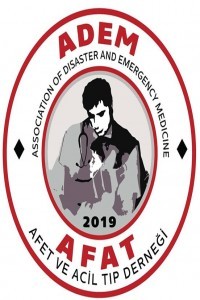2020 REHBERLERİNE GÖRE ÇOCUK VE BEBEKTE KARDİYOVASKÜLER YAŞAM DESTEĞİ
Kardiyopulmoner resusitasyon uygulamalarında standart oluşturmak, uygulama farklılıklarını engellemek, kanıta dayalı tıp temelli uygulamaları sağlamak amacıyla farklı alanlardaki dernekler ve eğitim kuruluşlarının bir araya gelerek başlattıkları ortak yeni resusitasyon rehberleri her beş yılda bir (2000, 2005, 2010 ve 2015 yıllarında) yenilerek yayınlanır. Bu derleme makalesi 2020 yılı Ekim ayında yayınlanan çocuklarda ve bebeklerde Temel ve İleri Kardiyovasküler Yaşam Desteği Rehberlerdeki değişiklikleri özetlemek amacıyla hazırlanmıştır.
Anahtar Kelimeler:
2020;, PALS, CPR, ÇOCUK, PEDİATRİ, TEMEL, İLERİ KARDİYOVASKÜLER YAŞAM DESTEĞİ, BEBEK
CARIOVASCULAR LIFE SUPPORT FOR CHILDREN AND BABIES ACCORDING TO 2020 GUIDES
New resuscitation guidelines initiated by associations and educational institutions in different fields in order to set standards in cardiopulmonary resuscitation practices, prevent application differences, and provide evidence-based medicine-based practices are renewed and published every five years (in 2000, 2005, 2010 and 2015). This review article has been prepared to summarize the changes in Basic and Advanced Cardiovascular Life Support Guidelines for Pediatrics and Infants published in October 2020.
Keywords:
2020;, PALS;, CPR;, CHILDREN;, PEDIATRIC;, BABIES;, BASIC;, ADVANCED CARDIOVASCULAR LIFE SUPPORT,
___
- 1. Highlights of the 2020 American Heart Association (AHA) Guidelines for CPR and ECC.https://cpr.heart.org/-/media/cpr-files/cpr-guidelines-files/highlights/hghlghts_2020_ecc_guidelines_english.pdf. Erişim: 01.11.2020.
- 2. Merchant RM, et al. Part 1: Executive Summary: 2020 American Heart Association Guidelines for Cardiopulmonary Resuscitation and Emergency Cardiovascular Care. Circulation. 2020 Oct 20;142(16_suppl_2):S337-S357.
- 3. Panchal AR, et al. Part 3: Adult Basic and Advanced Life Support: 2020 American Heart Association Guidelines for Cardiopulmonary Resuscitation and Emergency Cardiovascular Care. Circulation. 2020 Oct 20;142(16_suppl_2):S366-S468.
- 4. Topjian AA, et al. Part 4: Pediatric Basic and Advanced Life Support: 2020 American Heart Association Guidelines for Cardiopulmonary Resuscitation and Emergency Cardiovascular Care. Circulation. 2020 Oct 20;142(16_suppl_2):S469-S523.
- 5. Aziz K, et al. Part 5: Neonatal Resuscitation: 2020 American Heart Association Guidelines for Cardiopulmonary Resuscitation and Emergency Cardiovascular Care. Circulation. 2020 Oct 20;142(16_suppl_2):S524-S550.
- 6. Holmberg MJ, et al. Annual Incidence of Adult and Pediatric In-Hospital Cardiac Arrest in the United States. Circ Cardiovasc Qual Outcomes. 2019 Jul 9;12(7):e005580.
- 7. Atkins DL, et al. Epidemiology and outcomes from out-of-hospital cardiac arrest in children: the Resuscitation Outcomes Consortium Epistry-Cardiac Arrest. Circulation. 2009;119:1484–1491.
- 8. Knudson JD, et al. Prevalence and outcomes of pediatric in-hospital cardiopulmonary resuscitation in the United States: an analysis of the Kids’ Inpatient Database*. Crit Care Med. 2012;40:2940–2944
- 9. Virani SS, et al. Heart Association Council on Epidemiology and Prevention Statistics Committee and Stroke Statistics Subcommittee. Heart disease and stroke statistics—2020 update: a report from the American Heart Association. Circulation. 2020;141:e139–e596.
- 10. Holmberg MJ, et al. Trends in Survival After Pediatric In-Hospital Cardiac Arrest in the United States. Circulation. 2019;140:1398–1408.
- 11. Fink EL, et al. Unchanged pediatric out-of-hospital cardiac arrest incidence and survival rates with regional variation in North America. Resus- citation. 2016;107:121–128.
- 12. Matos RI, et al. Duration of cardiopulmonary resuscitation and illness category impact survival and neurologic outcomes for in-hospital pediatric cardiac arrests. Circulation. 2013;127:442–451.
- 13. Neumar RW, et al. Post-cardiac arrest syndrome: epidemiology, pathophysiology, treatment, and prognostication. A consensus statement from the International Liaison Committee on Resuscitation, the American Heart Assoc. Emerg. Cardiovascular Care Committee; the Council on Cardiovascular Surgery and Anesthesia; the Council on Cardiopulmonary, Perioperative, and Critical Care; the Council on Clin. Cardiology; and the Stroke Council. Circulation. 2008;118:2452–2483.
- 14. Topjian AA, et al. Pediatric post-cardiac arrest care: a scientific statement from the American Heart Association. Circulation. 2020;140(6):e194–e233.
- 15. Laverriere EK, et al. Association of Duration of Hypotension With Survival After Pediatric Cardiac Arrest. Pediatr Crit Care Med. 2020;21:143–149.
- 16. Herman ST, et al. Consensus statement on continuous EEG in critically ill adults and children, part I: indications. J Clin Neurophysiol. 2015;32:87–95.
- ISSN: 2717-7424
- Başlangıç: 2020
- Yayıncı: Afet ve Acil Tıp Derneği
Sayıdaki Diğer Makaleler
2020 REHBERLERİNE GÖRE GEBEDE KARDİYOVASKÜLER YAŞAM DESTEĞİ
2020 REHBERLERİNE GÖRE ÇOCUK VE BEBEKTE KARDİYOVASKÜLER YAŞAM DESTEĞİ
2020 REHBERLERİNE GÖRE YENİDOĞANDA KARDİYOVASKÜLER YAŞAM DESTEĞİ
2020 REHBERLERİNE GÖRE TOKSİKOLOJİ VE YAŞAM DESTEĞİ
2020 REHBERLERİNE GÖRE YETİŞKİNLERDE KARDİYOVASKÜLER YAŞAM DESTEĞİ
HASTANEDE SOSYAL HİZMET UZMANI VE TIBBİ SOSYAL HİZMET FARKINDALIĞININ DEĞERLENDİRİLMESİ
Büşra YAVUZ ERDAL, Ecem ÇAKIN, Berna ÇALGI, Serkan DOGAN, Doğaç Niyazi ÖZÜÇELİK
COVİD-19 PANDEMİ SÜRECİNİN YAŞLILAR ÜZERİNDEKİ BİYO-PSİKO-SOSYAL ETKİLERİ ÜZERİNE BİR DEĞERLENDİRME
